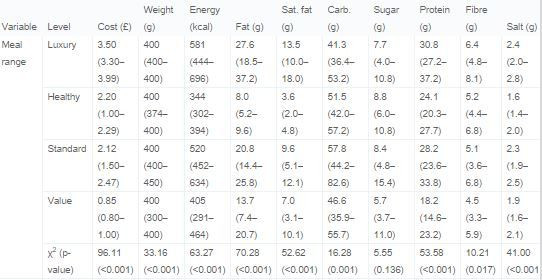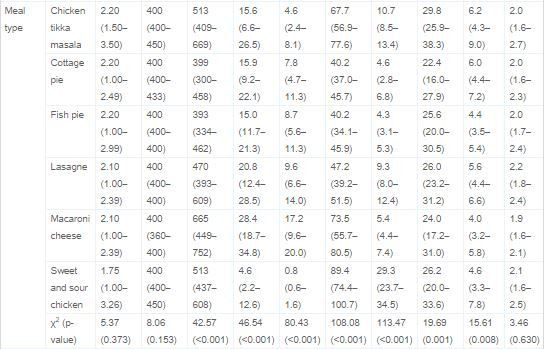TV Dinner Breakdown: Ready-Meals' Role In The Obesity Epidemic

Convenience — it’s what’s for dinner tonight, not nutrition. The rise of ready-meals and TV dinners throughout the world led researchers into one United Kingdom (UK) town’s grocery store freezers to figure out what exactly everyone’s eating so much of. The study, published in the journal Appetite, compared and contrasted 166 store brand ready-meals from 10 supermarkets throughout Northern England and found they may be contributing to obesity.
Europe’s ready-meal market is flourishing, with $33.2 billion in sales from 2013, analysts project the European market to be worth $44.5 billion by 2016. Nearly two-thirds of households consume these meals, and because more than 90 percent of ready-meals sold in the UK are supermarket brands, researchers focused on breaking down the nutrition and weighing the cost of each store’s brand.
Each meal was categorized as luxury, healthier, economy, or value and included six of the most popular meal types: macaroni and cheese, meat lasagna, cottage pie, fish pie, chicken tikka masala, and sweet and sour chicken. Fish pie and cottage pie contained the least amount of calories and sugar, while macaroni and cheese had the highest calories, fat, and saturated fat. Sweet and sour chicken had the highest sugar alongside the macaroni and cheese, but had the highest fiber content and protein.
Calories were the common denominator. Nearly all of the ready-meals had fewer calories than the generally recommended portion sizes for an average adult. In the UK the nutritional content listed on the back of any food package can vary by 20 percent from reality. Researchers found even if they did stray away from the numbers, meals marked as “healthier” were oftentimes low in nutrients and associated with more calories, saturated fat, protein, and fiber. The labels of ready-meals play a large role in consumer choice, which is especially important considering they’ve been replacing the standard home cooked meal for decades.


It all started in the 1950s, when American food company Swanson packaged copious amounts of Thanksgiving leftovers onto aluminum trays. They began freezing and selling the compact meals to airlines, serving them as versatile baking trays to heat and plates to eat off of. Thanks to America’s love for television and domestic freezers, Swanson quickly renamed their product the “TV dinner” and sold 10 million within the first year.
The success of the ready-meals grew in popularity, especially as more and more women started joining the workforce. Today, the researchers believe consumers by and large over-rely on convenience foods, including ready-meals, which consequently plays a role in the worldwide obesity epidemic. The link between consuming ready-meals and the increased risk of obesity has been made in past studies, attributing the habit of convenience to society’s “modern fast-paced lives.”
"When there was a universal domestic way of storing frozen food, companies saw the commercial opportunities associated with it," sociology professor at the University of Manchester Alan Warde, the author of Consumption, Food and Taste, told the BBC. "It influenced what people wanted to eat at home, but most of the time didn't have the culinary skills to make, ready-meals were the alternative. The industry is extremely versatile and constantly introducing new products in response to trends."
Source: Remnant J and Adams J. The nutritional content and cost of supermarket ready-meals. Cross-sectional analysis. Appetite. 2015.



























